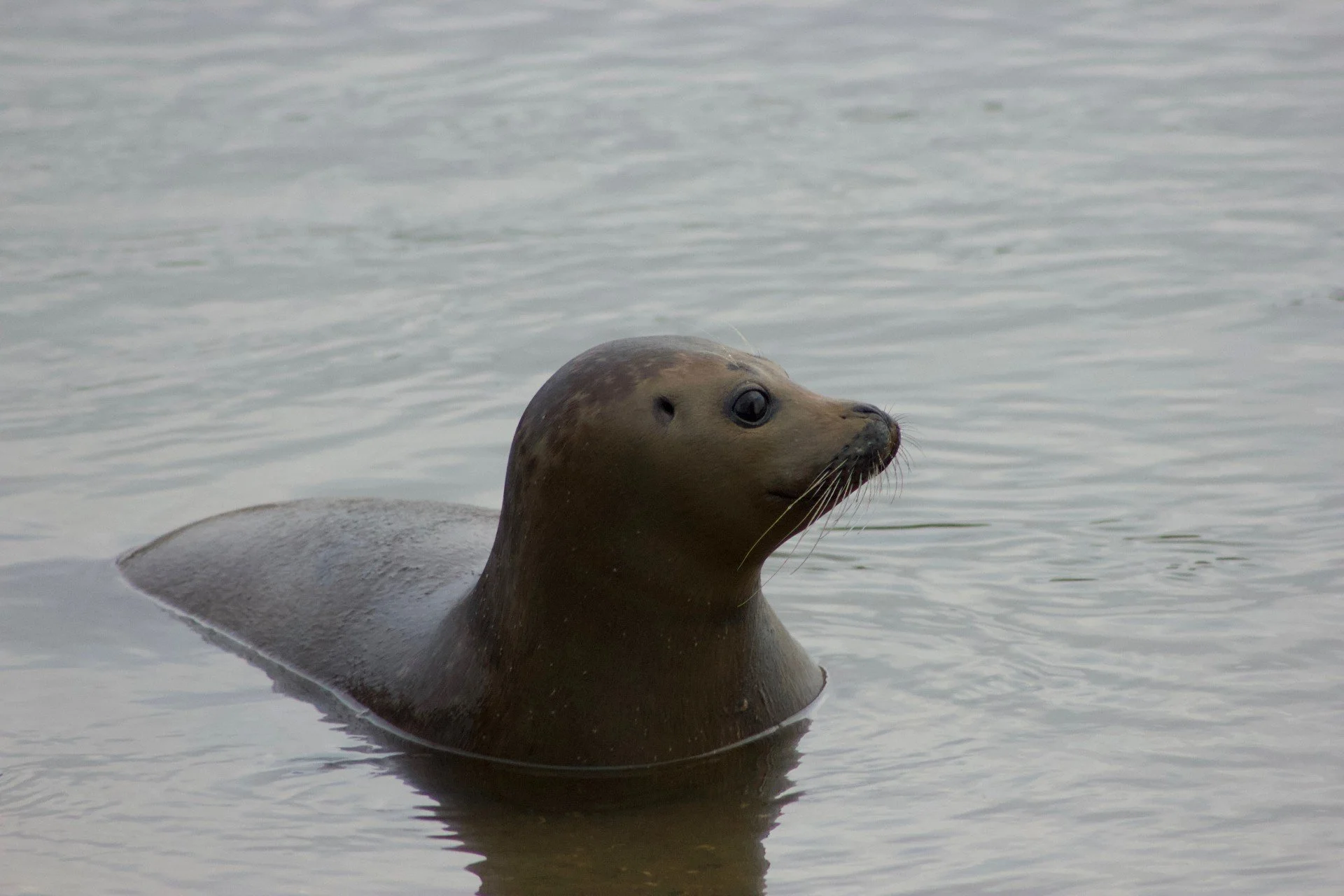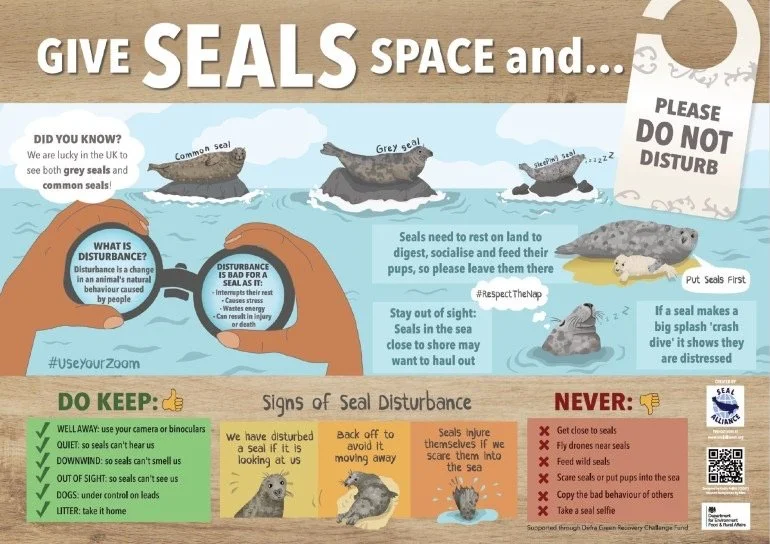What’s Happening
Seal Watch
Everyone of us can feel the weight of all that’s happening in the world right now and powerless about what we can do to make a difference. Climate change, concerns for the environment and the sad fact that we are losing lots of species are topics that are always front of mind so it was a joy to have an uplifting conversation with Mary Tester who set up Seal Watch in 2021.
Here at Urban Village LDN it has always been our aim to create positive content so it was so heart warming to hear that seals are thriving in the Thames, incredible given that 60 years ago the Thames was biologically dead, which now has 125 species including fish, endangered eels and four thousand seals. This river ecosystem is flourishing and even better news is hearing that this will only improve once Tideway is up and running reducing pollutants into the river by 98%.
What part can you play as the river flourishes, what can you do to help protect seals with growing numbers of them in London which Mary described as a safe place as there is a lot of food and no predators. Mary called seals the “unicorns of the Thames because they pop up then disappear quickly so it’s very special if you get a sighting”.
The story of Seal Watch starts in a sad place but out of a tragic event has come much good so we urge you to keep reading. Freddie the Seal was attacked by a dog in Putney and Mary was the British Drivers medic on the scene. After the disturbingly sad loss of Freddie, the realisation that there were holes in legislation, awareness and education that desperately needed filling Mary, originally from California, was spurred on to work alongside the Seal Alliance and Zoological Society of London to take action.
Seal Watch and these organisations have been working tirelessly to build a campaign about the code of contact when sharing space with seals and to place signs in key areas along the Thames especially when seals “haul out” and are at their most vulnerable as they can’t move as quickly on land. They want to raise awareness with members of the public, river users, dog owners, Thames path walkers, cyclists, joggers etc so that we can all be on the same page to prevent what happened to Freddie ever happening again.
Did you know that seals haul out to mate, feed pups, to malt and that to do this their skin has to be the right temperature so for them to be on land and undisturbed is vital to their survival. Mary told Urban Village LDN “if a seal looks at you then you have disturbed them, if they dive quickly you’ve scared them” and her advice is make like a National Geographic Photographer and to observe at a distance, “seals shouldn’t realise that you are there” and selfies with a seal are a huge NO.
Signs have been put up and down the Thames with the help of DEFRA and H&F council who funded the sign you may have spotted by Fulham Reach. Mary told us “we put them in places where you see a lot of seal sightings and in spots where potentially they could haul out and people might be tempted to go down to see them with pets. Dogs coming across seals is a more regular occurrence than people might think. Getting close is a danger not only to the seal but also to people and their pets. Seals are curious, really puppy like and adorable. We’ve heard many stories of seals getting on to paddle boards and popping up alongside rowers but like any animal, wild or domestic, they get scared and can attack in defence just as Freddie did when people tried to intervene because he was afraid. We are asking people to be mindful, it isn’t worth the risk to the seal, dog or the person”.
Seal Watch advice is that if you see a seal put your dog on the lead, never chase, touch or feed a seal, report sighting onto the ZSL sightings map. This code of conduct can be carried to other places. Mary talked about Cornwall which we all know is “Fulham on Sea” in the summer. In high season seals are disturbed every 7 minutes, Mary used the comparison of us being interrupted in our homes constantly which really put it into perspective. There have been stampedes of seals due to people getting too close resulting in blood trails across rocks, seals falling causing injury or death and pregnancies being terminated. Ring frisbees shouldn’t be taken to the beach or places with seals as they are getting entangled in them, there have been lots of incidences the most recent was in Cornwall a couple of weeks ago.
Mary told us that in California since 1972, under Nixon, there have been Marine Protection laws in place but here in the UK there are huge gaps for example if a person harms a seal that is illegal but if a dog does nothing happens. There is a policy currently in parliament to strengthen laws let’s hope that gets passed sooner rather than later with attention elsewhere in an election year and the environment seemingly way down the agenda. Apologies we got a tad political there when we always said that wouldn’t be our remit!
An education programme is underway with Mary speaking to children at Fulham Boat Club to encourage them (and their parents!) to love and observe seals but to do so in the right way. There is also a "Wild Scheme” for riverside businesses which is currently optional but Mary hopes it will eventually be mandatory for tour boats who now also take people out to see seals, boat operators, paddle board companies etc “they will be trained to avoid marine disturbance just as Scotland has a scheme in place for the protection of basking sharks”.
If you want to find out more head to the Seal Watch button below or follow them on Instagram here https://www.instagram.com/thamessealwatch/?hl=en and if you’re a riverside regular Mary has asked if you could please save the hotline numbers below to your phone.
In the meantime, if you didn’t know, there are two types of seals in the Thames: Grey seals described as dog like, darker in colour and with a big roman nose and Harbour seals like Freddie who are smaller, cat like, lighter in colour and spottier. Males are darker with less spots.
Let’s hope as Mary says that “this huge awareness campaign is eye opening and that we can learn from our mistakes”. We’ll keep you posted as the next seal survey, having not taken place for two years, will be undertaken this August. Mary is interested to hear the results, as are we!
Numbers to call for different marine mammal emergencies:
Seal unwell or in danger: BDMLR 0182 5765 546
Deceased marine mammal: CSIP (Cetacean Stranding Investigations Programme) 0800 652 0333
Report a witnessed wildlife crime: 0800 555 111
Report a crime in progress: 999

